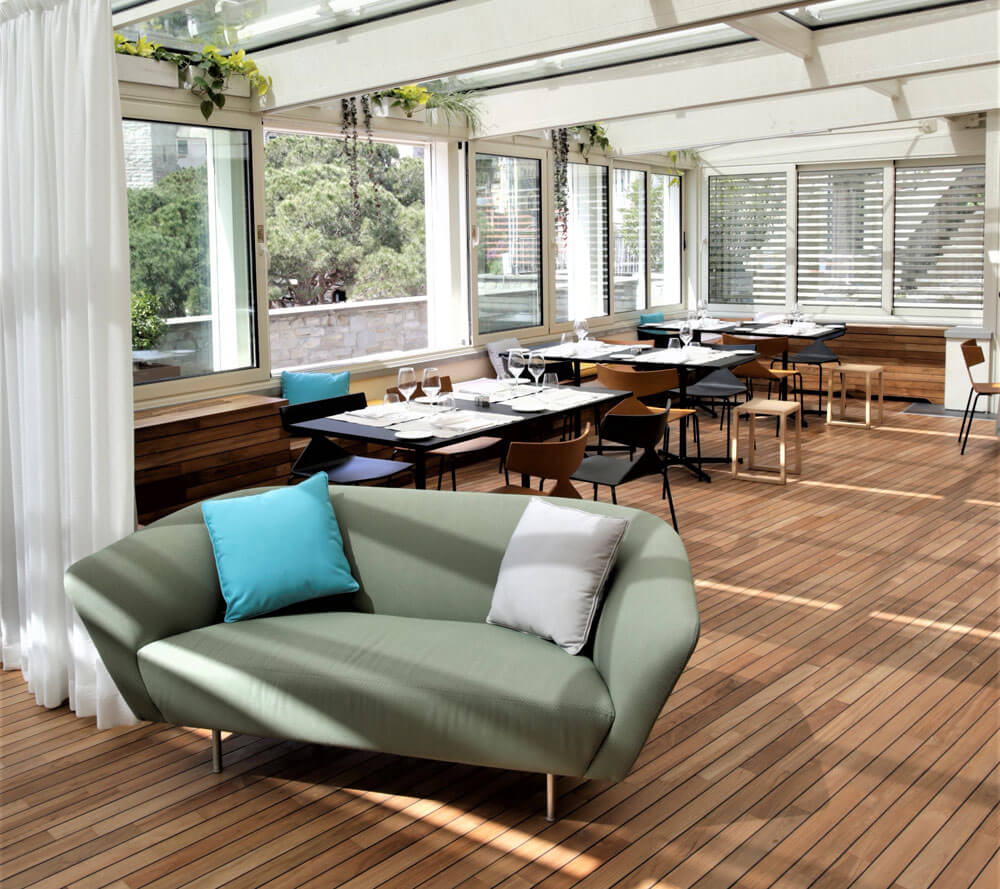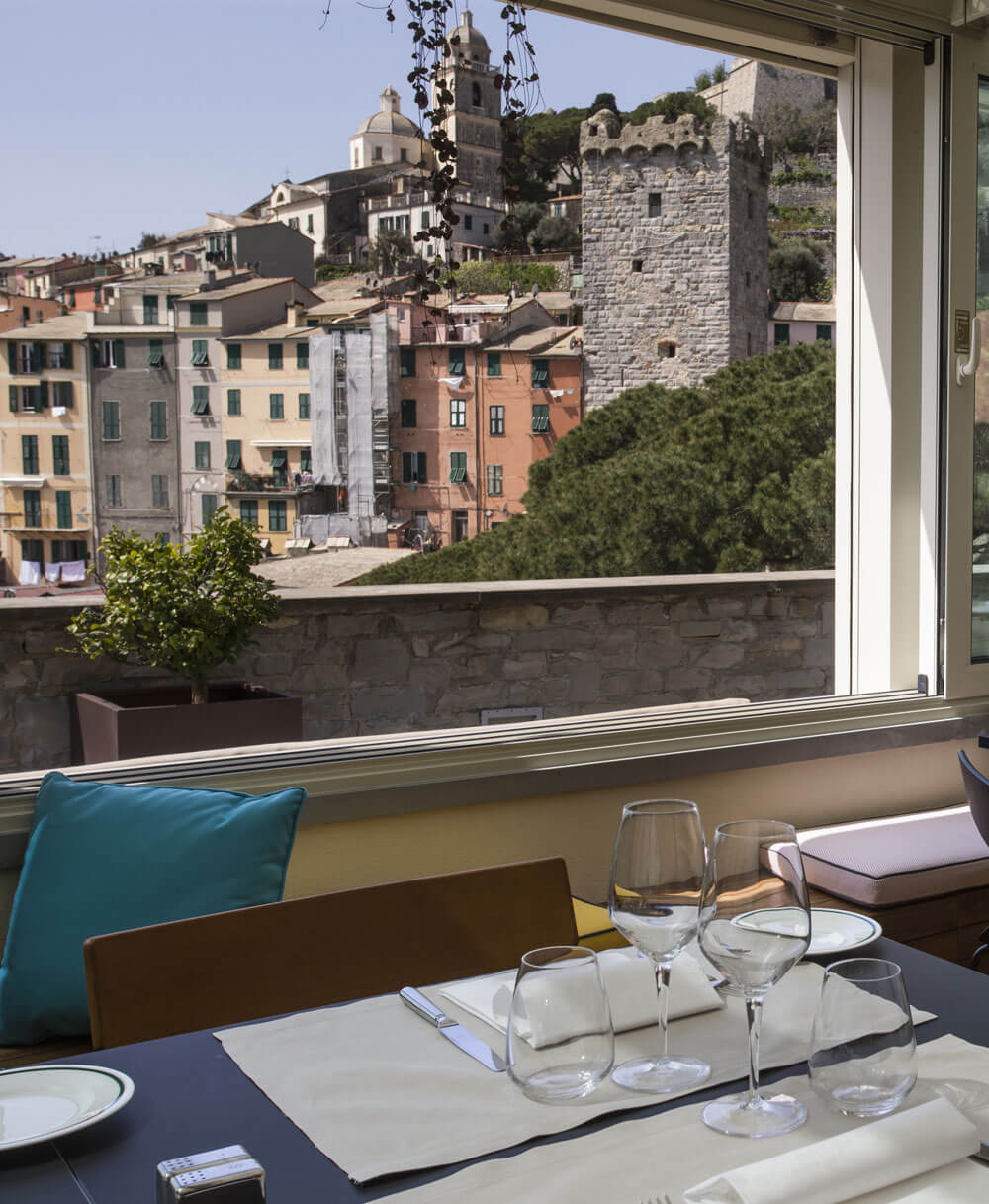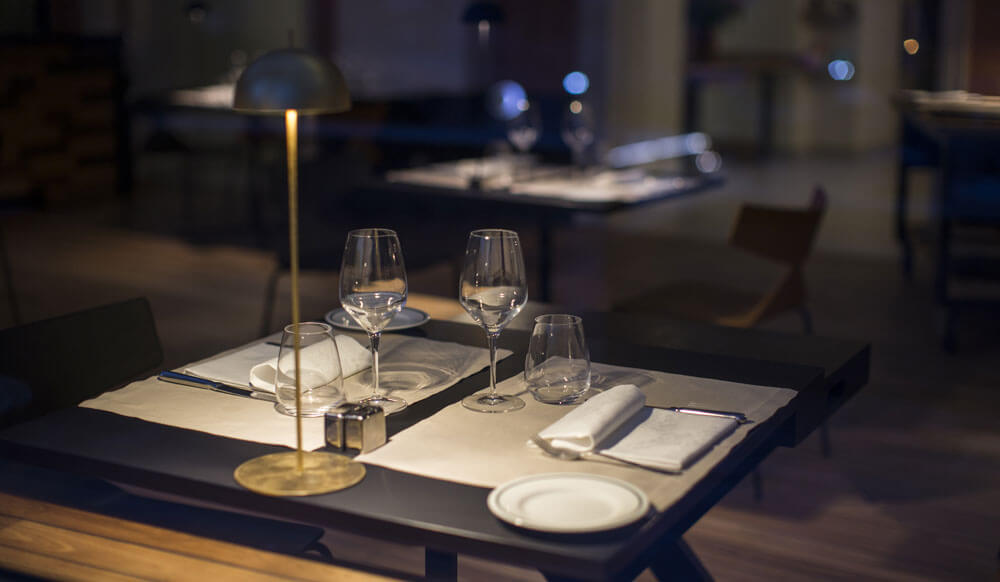Interview with Virginia Neri (part 1)
The ancient maritime traditions of the Gulf of Poets and the skills of local ‘maestri calafati’; the typical pastel colors of the buildings perched along the Italian Riviera; the exotic and pristine nature of Palmaria Island… these are some of the elements that were incorporated in the spaces of Grand Hotel Portovenere. Located between La Spezia and Cinque Terre, this 5-star hotel has always been at the forefront in the promotion of the Gulf of Poets, a little-known destination off the beaten path with so much to offer in terms of history, culture, gastronomy and unique landscape.
Virginia Neri is the local architect behind the ingenious interior design choices at Grand Hotel Portovenere. In this first interview she explains the concepts behind the integration of local traditions and nature in the hotel’s restaurant – Palmaria Restaurant. While in the second part of the interview, she will speak about the most prestigious rooms of the hotel, Suite del Castello and Suite dei Poeti.
What were the choices that determined the brand-new look and feel of Palmaria Restaurant in 2018?
The choices that led to the restyling of Palmaria Restaurant were guided mainly by two actions: observing and listening. The observation of the surrounding landscape suggested the colors and the materials that this space could feature. The identity and character of the restaurant was completed by listening to the history and culture of the territory.
How would you describe the outcome?
With the careful renovations that took place before the opening of Grand Hotel Portovenere in 2014, Palmaria Restaurant was placed in a modern addition to the historic building of the 1600s. This area, shaped like a parallelepiped, is completely glazed. Its large windows offer a grand view of Portovenere’s Channel, spanning from the Promontory of S. Pietro to Palmaria Island, with the open sea leading to Cinque Terre in the middle. Now, thanks to the latest restyling works of 2018, guests feel as if they are in a contemporary sailing ship that is ready to weigh anchor towards the horizon.

What are the historic and local elements that characterize this “contemporary ship”?
The nautical-style floor made with rubber-coated teak recalls the ancient ‘calafatura’ (caulking) technique used for wooden shipbuilding. The Gulf of Poets was full of ‘mastri calafati’, or skilled artisans specialized in making the seams in wood boats watertight. This tradition is still strong in the hamlet of Le Grazie, where you can admire ancient sailers moored in the bay.
A teak bench embraces the perimeter of Palmaria Restaurant. Here guests will find colourful cushions that were handmade by a local upholsterer. The colors are yellow, pink and green… in other words, these are the pastel colors of Portovenere’s ancient buildings, which can be admired by raising your gaze over the glass windows.

Any other ‘secrets’ you would like to share about the interior design at Palmaria Restaurant?
The contemporary-style tables and chairs alternate ochre and black, colors that were chosen because they emphasize the warmth of the wooden floors and of the sunset light, which creates a unique atmosphere every evening.
Also, once the sun sets, a small umbrella-shaped lamp is placed on every table. The lampshades create an intimate atmosphere and prevent the reflection on the glass windows, allowing you to enjoy Portovenere even at night.

About Virginia Neri
She was born in Sarzana, and now lives in Castelnuovo Magra, both in the province of La Spezia, in the hinterland of the Gulf of Poets. She attended the Faculty of Architecture in Florence and graduated with honors. Her thesis was about Restoration in Industrial Archaeology, a theme that was developed in subsequent scientific publications. She has been working as an architect since 2007, and collaborates with the University of Florence and its Restoration Course. In 2013 she presented her Masters’ dissertation on a contemporary project for the historic Malaspina Castle in Fosdinovo. Virginia Neri has worked with different architecture studios, and also takes care of green design and temporary installations.
Discover more from Discover Portovenere Blog
Subscribe to get the latest posts sent to your email.
1 Comment